
Almost all of us know and love fruit. But how many fruits really exist?
Fruitology is our answer to this question. This project shows you an iconic (and quite exhaustive) representation of the most widespread variety of fruits in the world.
Hope it will help you discover new wonderful tastes.
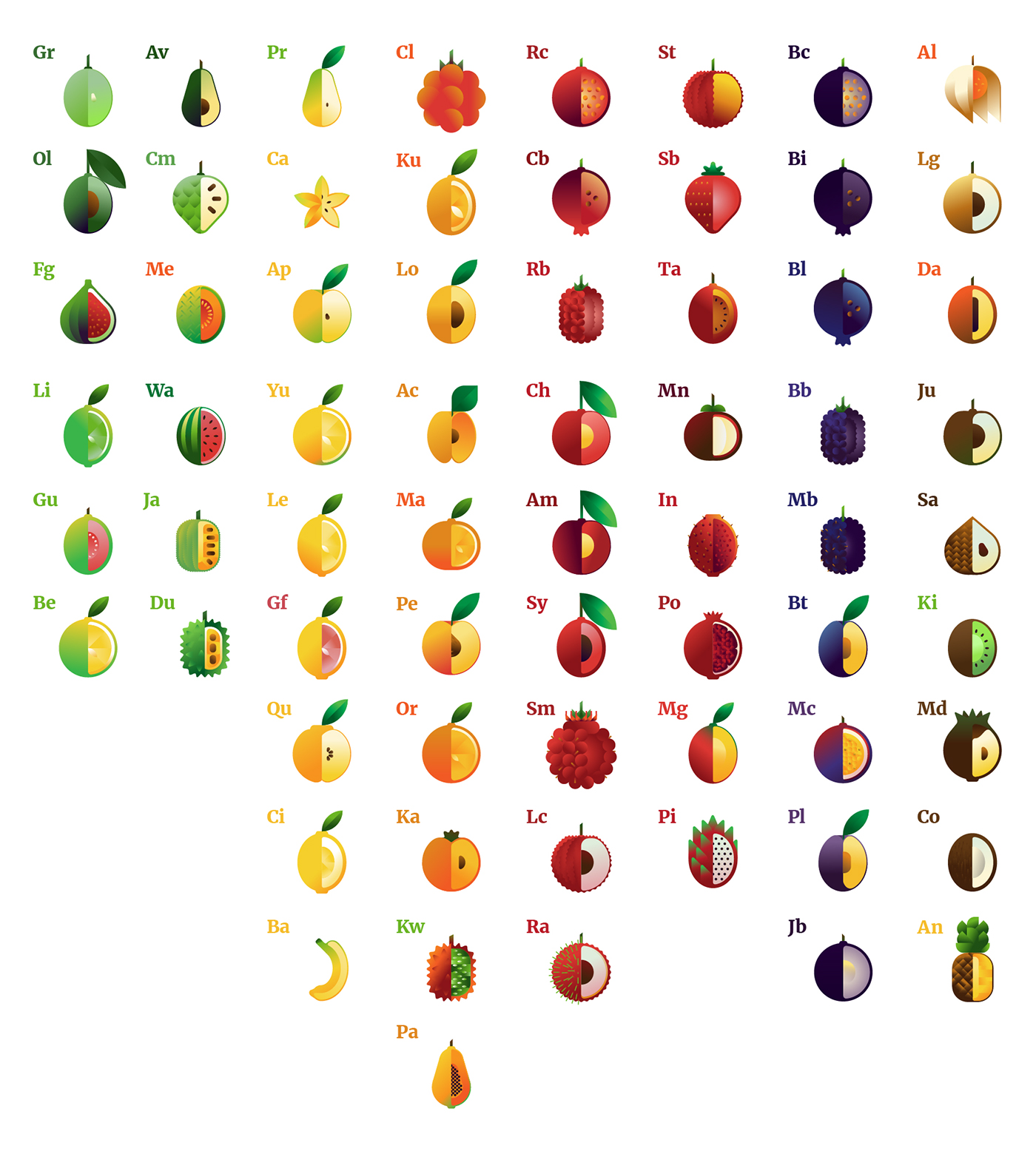
For easy reading we split the fruits in 6 mixed groups mainly by geographical distribution. Each fruit has family, species and common name (in English, Spanish, Italian).
Citrus
Group composed solely of the fruits of the Rutaceae family, better known as "Citrus". These fruits have Asian origins but are widely diffused in Europe since ancient times.
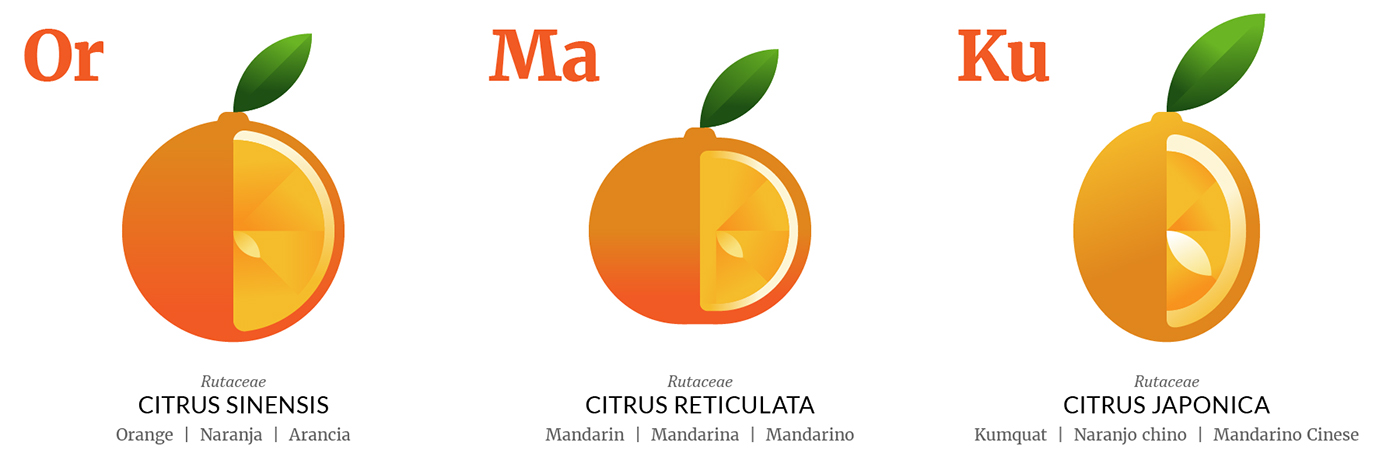
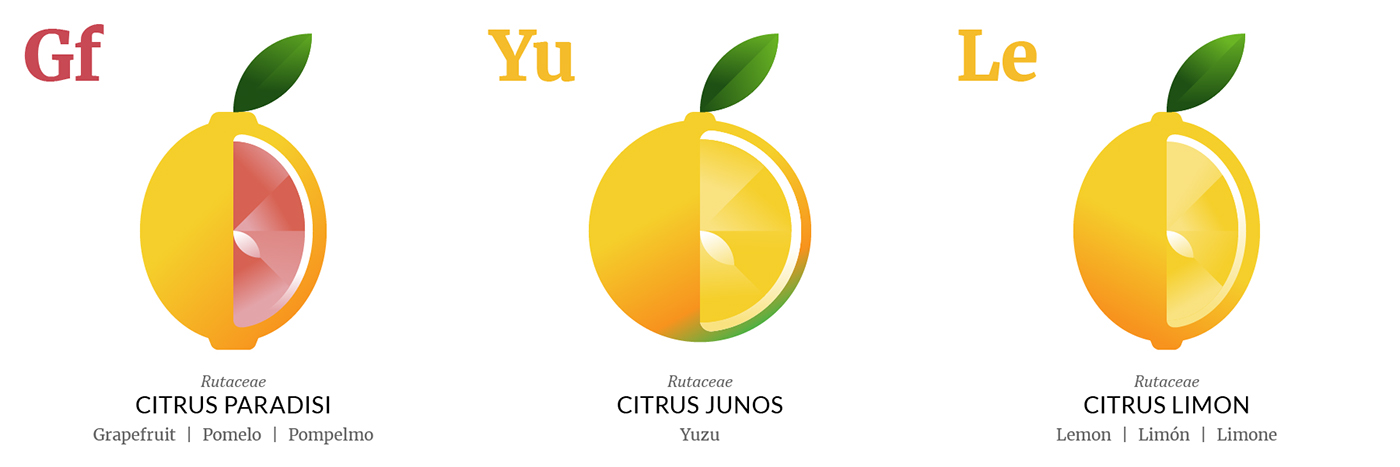

European
Group composed mainly of fruits of the Rosaceae family, with Asian origin but widely diffused through Europe and Mediterranean sub-region. An exception is the Vitis Vinifera, included for its widespread in Europe since ancient times, and Eriobotrya Japonica, spread from Asia.
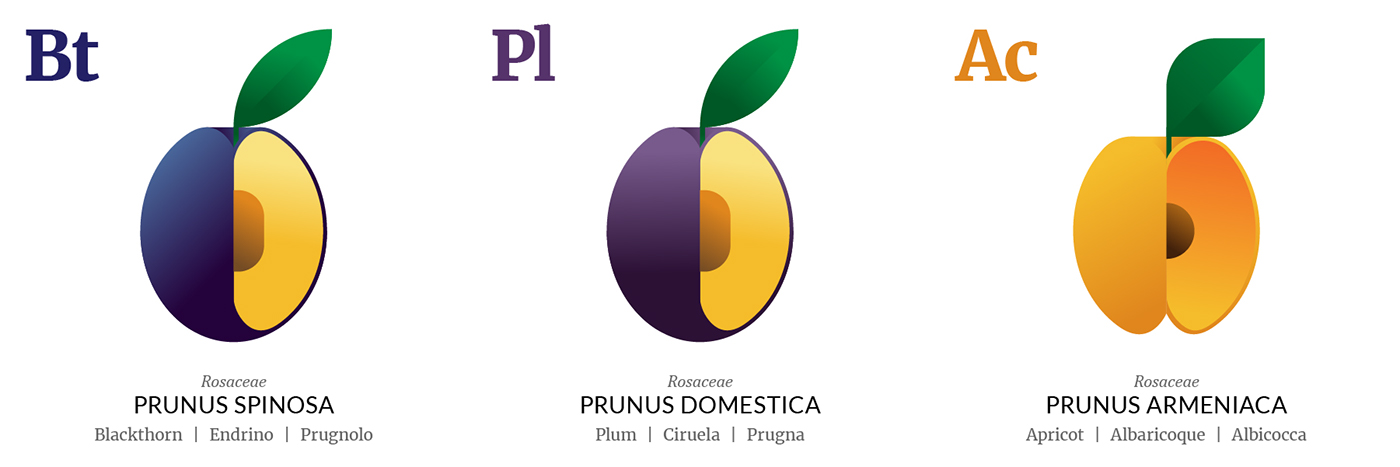
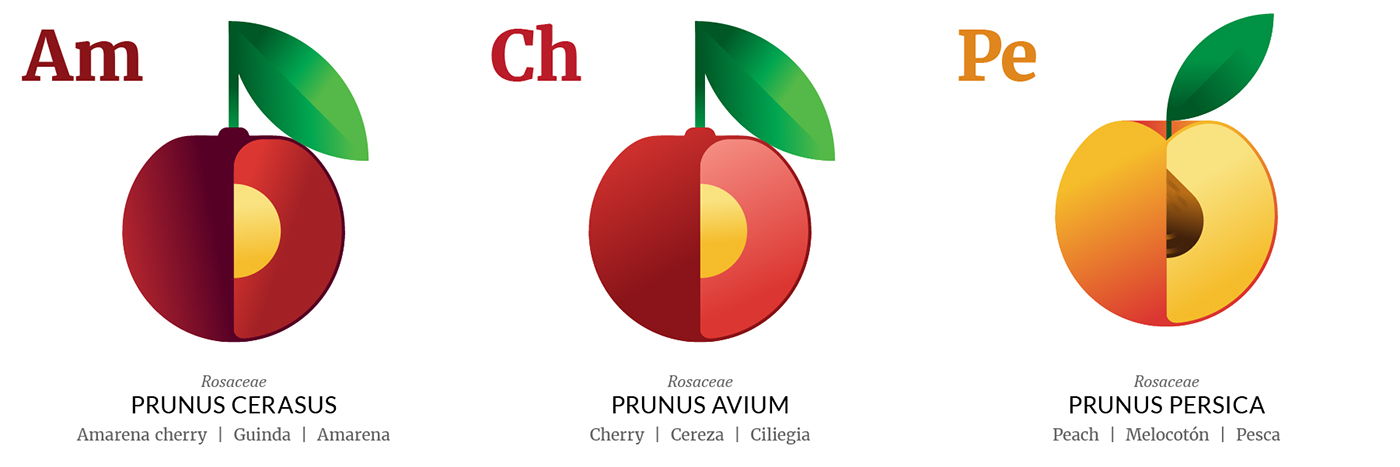
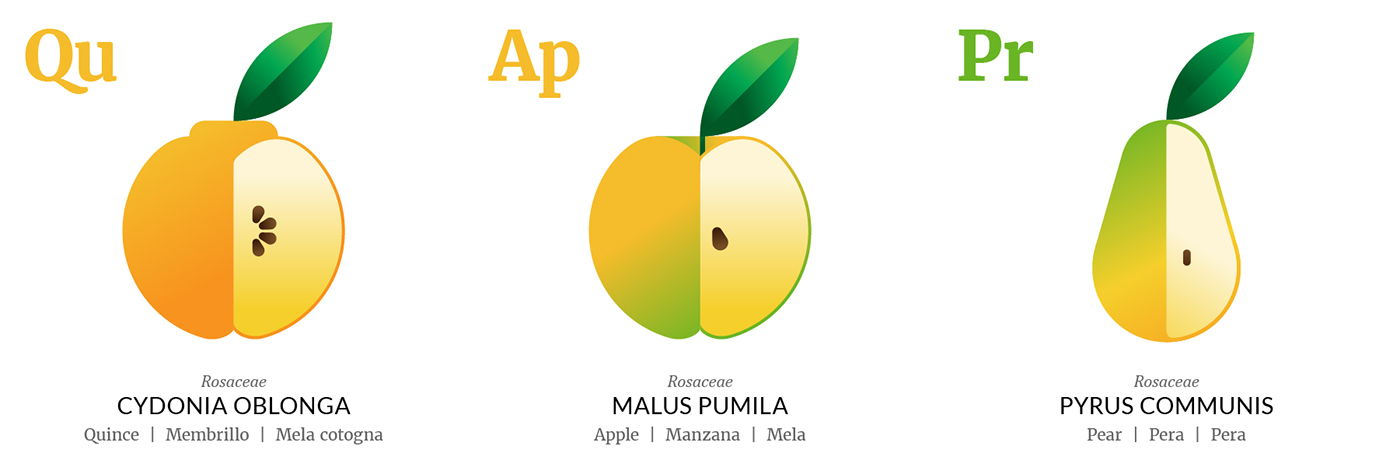
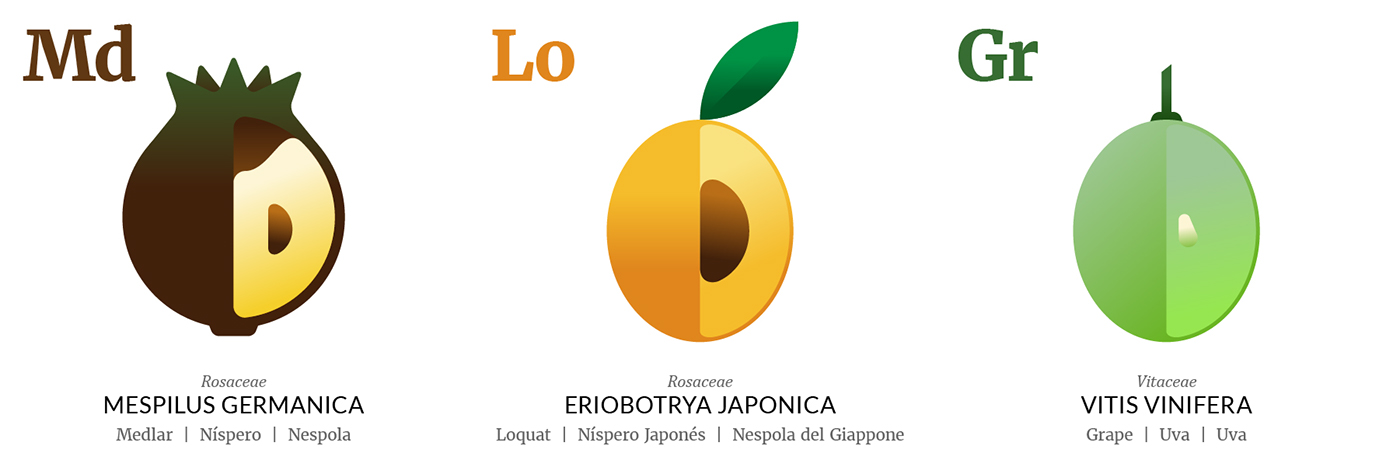
Red fruits
Group of fruits of various families, mainly diffused in the undergrowth of temperate and cold regions of Europe, Asia and America. These fruits are better known under the name of "Red fruits" because of their characteristic skin color, ranging from red to dark purple. All these fruits come from bushes, except the Arbutus Unedo, which grows on the tree that has the same name.
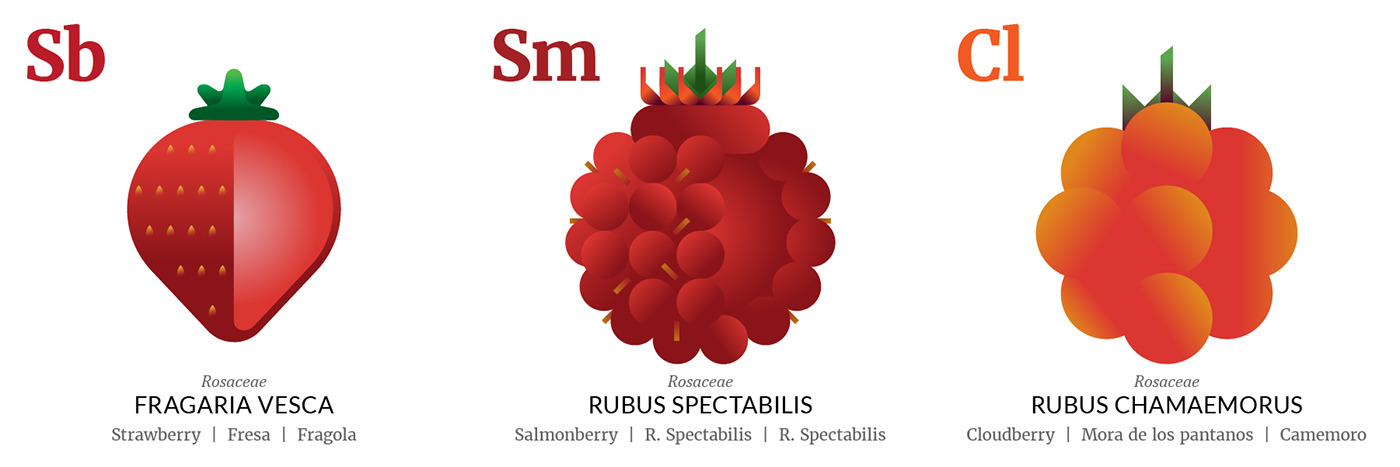
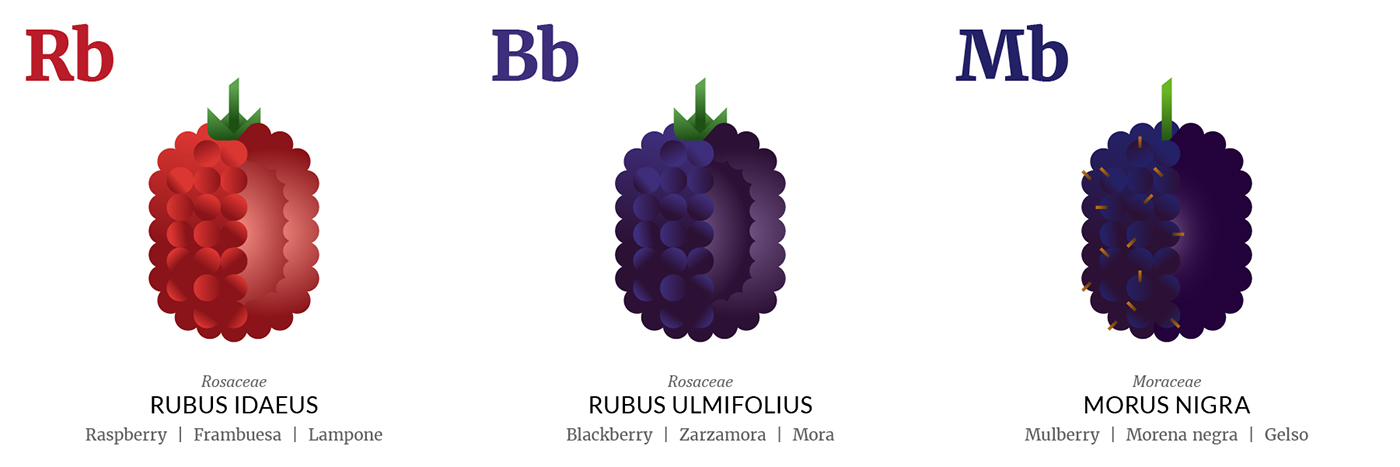

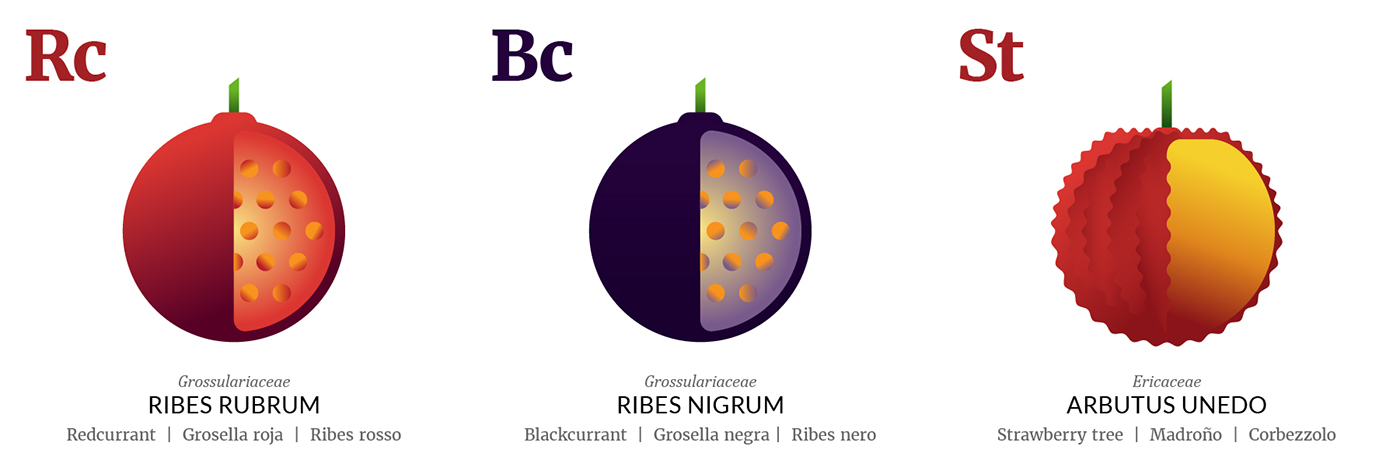
Middle-Eastern
Group made up of exotic fruits, very popular among Middle Eastern and Mediterranean cultures since ancient times. An exception is Cucumis metuliferus from Africa and Diospyros Kaki from Asia.


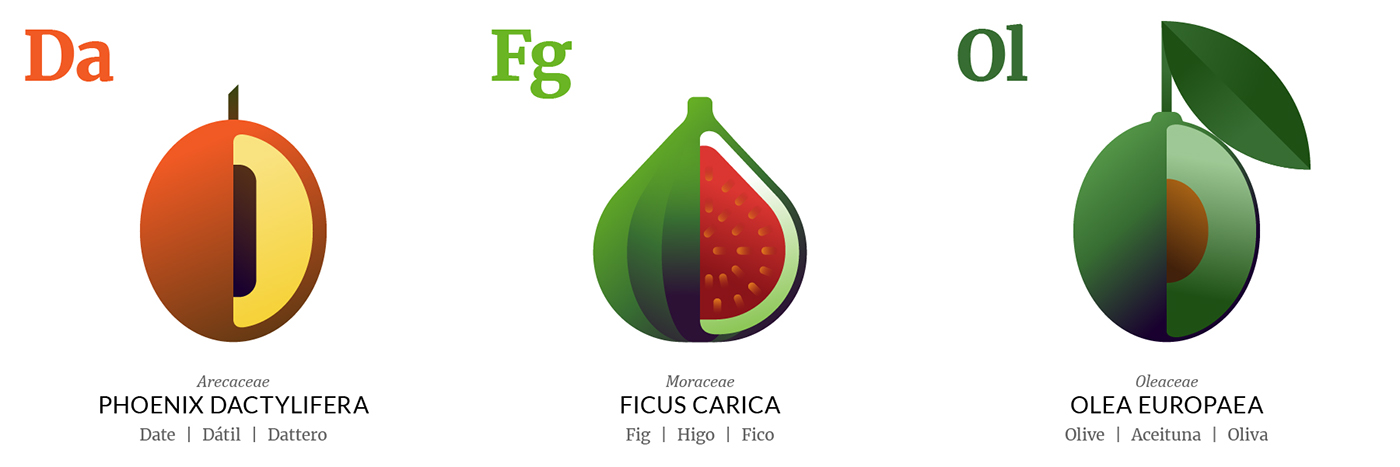
Tropical
This group brings together various exotic fruit families, largely diffused in South America and the Caribbean, better known by the name of "Tropical fruit". An exception added here is the Synsepalum Dulcificum, or Miracle fruit, coming from African western coasts.



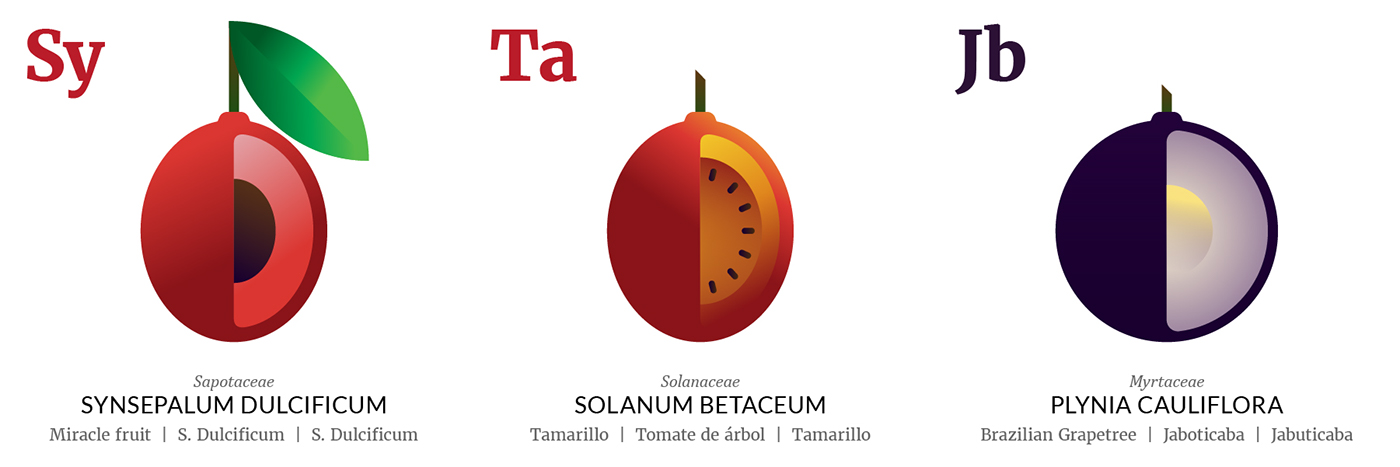
Asian
This group includes some fruit families spread in Asia and Southeastern Asia. You can find these fruits in western markets too. Two special cases are those of Mangifera Indica and Hylocereus Undatus (Pitaya). The former spread from India to Asia, Southeastern Asia and America, mainly considered as "tropical fruit". The latter spread from Central America to Southeastern Asia.


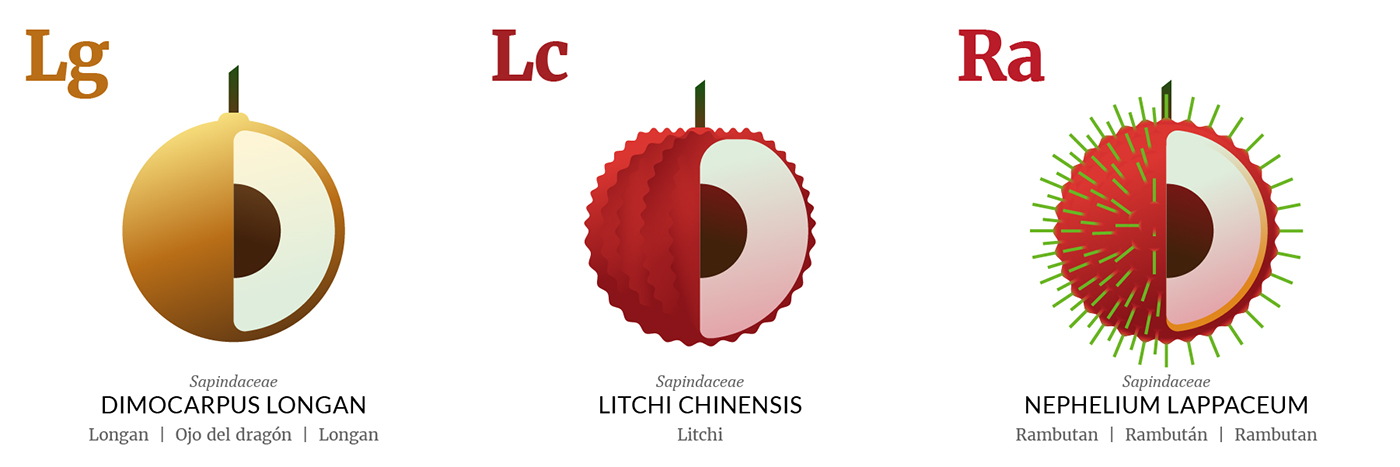
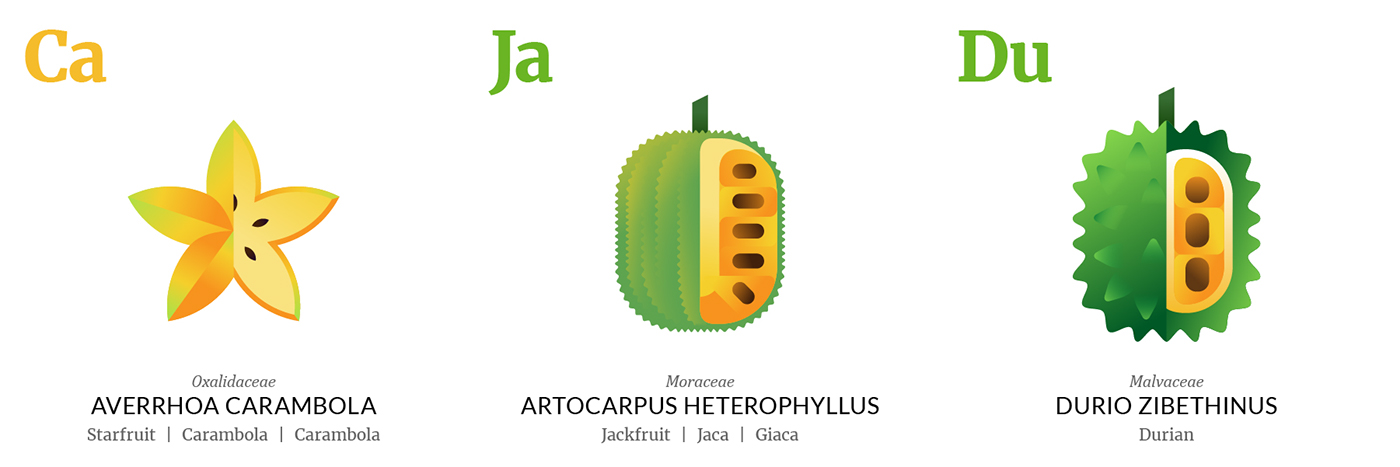
We selected only main species according to their taxonomic genre. Please consider that there are many other varieties of the same genre which spread regionally that have not been included in this study. This project has no scientific intentions. Shapes and colors are meant to express artistically and iconically proportions and structure of each fruit species (skin, pulp, seeds). Starfruit is the only fruit cut horizontally to show its peculiar shape. It's possible that some informations are not accurate. If you find any error please tell us.



